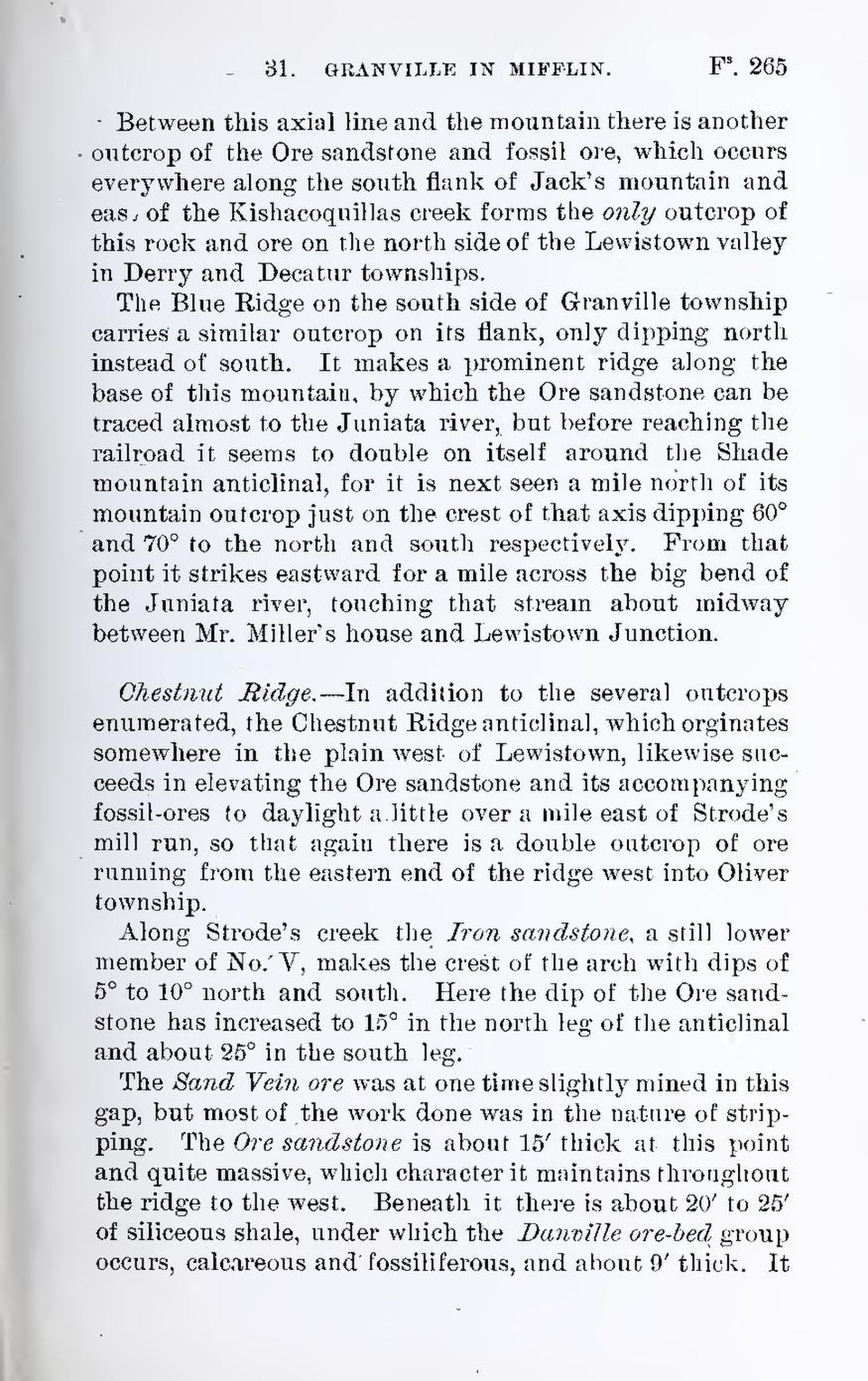Between this axial line and the mountain there is another outcrop of the Ore sandstone and fossil ore, which occurs everywhere along the south flank of Jack’s mountain and east of the Kishacoquillas creek forms the only outcrop of this rock and ore on the north side of the Lewistown valley in Derry and Decatur townships.
The Blue Ridge on the south side of Granville township carries a similar outcrop on its flank, only dipping north instead of south. It makes a prominent ridge along the base of this mountain, by which the Ore sandstone can be traced almost to the Juniata river, but before reaching the railroad it seems to double on itself around the Shade mountain anticlinal, for it is next seen a mile north of its mountain outcrop just on the crest of that axis dipping 60° and 70° to the north and south respectively. From that point it strikes eastward for a mile across the big bend of the Juniata river, touching that stream about midway between Mr. Miller’s house and Lewistown Junction.
Chestnut Ridge.—In addition to the several outcrops enumerated, the Chestnut Ridge anticlinal, which orginates somewhere in the plain west of Lewistown, likewise succeeds in elevating the Ore sandstone and its accompanying fossil-ores to daylight a little over a mile east of Strode’s mill run, so that again there is a double outcrop of ore running from the eastern end of the ridge west into Oliver township.
Along Strode’s creek the Iron sandstone, a still lower member of No. V, makes the crest of the arch with dips of 5° to 10° north and south. Here the dip of the Ore sandstone has increased to 15° in the north leg of the anticlinal and about 25° in the south leg.
The Sand Vein ore was at one time slightly mined in this gap, but most of the work done was in the nature of stripping. The Ore sandstone is about 15′ thick at this point and quite massive, which character it maintains throughout the ridge to the west. Beneath it there is about 20′ to 25′ of siliceous shale, under which the Danville ore-bed group occurs, calcareous and fossiliferous, and about 9′ thick. It
